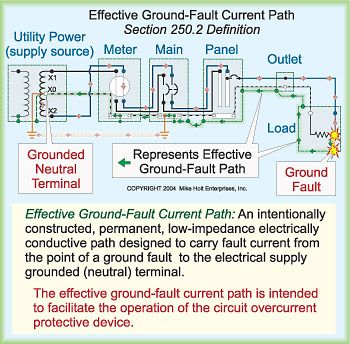bigduvid
Member
- Location
- Cleveland, Ohio USA
It is a 15 amp circuit. It is a detached garage.
The two three way switches are located in the house and only the light leg i going overhead to the garage
I'm not to bright splain to me why you have 2 3-ways 'inside' and only the switch leg going to the garage? :dunce:
I am understanding a fault to the neutral. The neutral is bonded to the EGC in the house main panel. If there is no panel in the garage why is it required to be bonded in the garage. If there is a fault to the neutral or to the ground rod, the circuit will trip [breaker or fuse].

Going to the garage are the leg of the three way, a hot and a neutral.
I am replacing these three wires with a Triplex.
:? We have replaced the overhead feed from the house to the garage using # 6 Triplex. This is a multi branch circuit feed. The inspector is not allowing the bare wire to be used as a neutral. He is requiring it be replaced with Quadlex. We have done this many times with out objection from inspectors. Is there any code that states this installation is acceptable? Or does the code state that this installation is not acceptable?
If the installation pre dates the 2008 NEC and there is no metallic pathways between the buildings then a 3 wire triplex was allowed as a feeder to the building but not as a MWBC. When you replace the wire then it must be brought up to code. 4 wire is required unless you are on the 2005 NEC or earlier.
Dennis, even my 1999 NEC does not allow a bare neutral after the main service disconnect and bonding point, the neutral has always been required to be an insulated conductor after this point as far back as I can remember, ahead of the service point then you can use the 230.22 exception.
I'm sure you were only pointing out that prior to 2008 you could use a 3-wire feed but just wanted to make clear the neutral still has to be insulated.
I'm sure its overlooked in many applications too, because i've seen my share of triplex strung across peoples property.
If it is existing, grandfathered, does it pose any safety issues/concerns?

